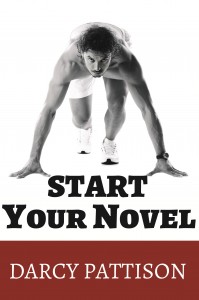I am plotting Act 2, and the terror of the empty page is hitting, take two.
So, I’m going back to some previous posts about plotting to see what they will tell me about plot, especially the middle of this novel.
In 9 Ways of Looking at Plot, I looked at various ways to plot; in 29 Plot Templates, we looked at specific types of plots. How do these plot paradigms handle act 2? I won’t reprise all of them, just those that have a lot to offer for Act 2.
- Hero’s Journey: One of my favorite plot paradigm’s is the Hero’s Journey, a set of archetypical steps that a hero takes on a quest. Act 1 sets up the quest, while Act 3 shows the hero’s victory. What happens in the middle. Here are the stages:
- Crossing the First Threshold – committing to change
- Tests, Allies, Enemies – experimenting with 1st change
- Approach to the Inmost Cave- preparing for big change
- Supreme Ordeal – attempting big change
- Reward – consequences of the attempt
- The Road Back – rededication to change (Start of Act 3)
Basically, it’s a study of character. What are the challenges faced by the hero, especially inner challenges; who helps him and who tried to defeat him; how does the hero make it through the worst possible challenge? It asks you to step back and find out what is the character’s biggest inner challenge; then deliver that with emotional impact.
- Snowflake or Branching Structure: The Randy Ingermanson’s Snowflake Method, and How to Write a Damn Good Novel by James N. Frey advice writers to start with a single conflict resolution and subdivide that endlessly until you get to the level of plot you want. This type of plotting moves from general to specific, without stopping to look back at the general.
- Snowflake + Important Points Paradigm. Syd Field (writing mostly about screen plays but with huge application for novels) basically advises a Snowflake approach to writing plot, but overlays a paradigm that points to important events and connections among those events. For Field, if you know the beginning and the end, the big scenes at the end of Act 1 and Act 2, and the midpoint–well, the rest is just connecting the dots.
- Quest. In this character oriented story, the protagonist searches for something and winds up changing him/herself. As in the Hero’s Journey, the middle must force the protagonist to face up to his/her greatest fear.
- Adventure. Plot oriented, this features a goal-oriented series of events. Act 2 must serve up a series of ever-escalating action scenes that lead to the big action-packed confrontation at the end.
- Pursuit. This is the typical Chase Plot. Definitely action-oriented, Act 2 is a series of close encounters; the pursued must be seen or seem to be within reach before the pursuer inevitably fails to catch up until Act 3.
- Rescue. This is another easy to recognize action-oriented plot and like the Chase Plot, it only works if you tease the reader with a series of near-rescues.
- Escape. A variation on the Rescue is when the protagonist escapes on his/her own; plot 2 is a series of near-escapes. You’re playing a tug of war with your audience’s emoions: Oh, she’s out. No, she’s recaptured.
- Revenge. Ah, character comes back in with this one. Someone is wronged and vows to take revenge. Often Act 2 is a series of planning maneuvers, moving into position to take the revenge.
- The Riddle. Love a good mystery? Act 2 is a slow revelation of clues, ever escalating in danger and excitement. Be sure to throw in some red herrings to keep the reader off balance.
- Rivalry. Character oriented, this story follows two main characters, one on a downward track and one on an upward track and their interactions. Act 2 is the movement of characters on their upward/downward tracks until the final clash.
- Underdog. Everyone is the US roots for the Underdog. This is the plot where the under-privileged (handicapped, poor, etc) triumphs despite overwhelming odds. But in the middle, s/he is still the Underdog, still losing–but learning something that will ultimately help him/her succeed.
- Temptation. Pandora’s Box extended to novel form. If Act 1 shows the character giving in to temptation, Act 2 shows the results of giving in to temptation. It should be focused on the internal cost of temptation, a character plot.
- Metamorphosis. This is a physical transformation of some kind. If you recently watched the movie, “District 9″, you’ll recognize this plot form. It’s Dracula, Beauty and the Beast, or the one I remember best is The Fly. Act 2 follows characters as they deal with the results of transformation; or, perhaps, it’s the process of transformation.
- Transformation. Similar to the previous, this plot features an inner change, instead of changing the outer form. This time, Act 2 focuses on the transformation of the inner character; selfish to generous, cruel to kind, etc. The inner arc must be very clear in Act 2, the old way of life/thinking is challenged.
- Maturation. Bildungsroman, rite of passage, coming-of-age–these terms all refer to someone growing up morally, spiritually or emotionally. Often, it’s just a hint of growth, or a tiny change that hints at larger changes. Act 2 must focus on challenging the character to grow in some way. What challenges the old ways of thinking? That’s what the character must face in Act 2.
- Love. The classic Boy-meets-Girl plot. Act 1: Boy meets Girl and they hate each other; Act 2: They hate each other; Act 3: Boy gets girl.
- Forbidden Love. Oh, hasn’t Stephenie Meyer milked this one in her Twilight series? Brilliant use of the forces that keep her characters apart, while still attracting. It’s still the same as above: Act 1: Boy meets Girl and they hate each other; Act 2: They hate each other; Act 3: Boy gets girl.
- Sacrifice. From the Biblical tale of Jesus to the story of parents sacrificing for their children, this is a staple of literature. Act 1 sets up the situation and makes the stakes clear; Act 2 escalates everything until; Act 3, there’s no place to turn except sacrifice. In this plot, you are escalating the stakes and cutting off options during Act 2, so there’s only one answer at the end.
- Discovery. You know those secrets you’ve buried deep in your past? This story digs around, exposes secrets and watches them affect the characters. Act 1 sets up the fact that there is a secret; Act 2 slowly uncovers the secret while Act 3 is about the results of the secret. Alternately, if Act 3 is about the revelation of a secret, then Act 2 is about growing suspicion, or perhaps about a deteriorating relationship that is affected by the secret. Only the secret can save the relationship (or destroy it).
- Wretched Excess. When a character is in a downward spiral from alcohol, drugs, greed, etc. this is the plot form. Act 1 shows the before state; Act 2 covers the events in the downward plunge in clear downward narrative arc.
- Ascension or Descension. A rise or fall from power puts a character into this plot form. Like the above, Act 1 shows before, Act 3 shows after, and Act 2 shows the process of getting from one to the other.
-
Similar to the Hero’s Journey is Peter Dunne’s adaptation to a story in which two main characters influence each other, or one character drastically changes a second. The Emotional Structure details how the characters interact. This could be a sort of Rivalry story from above, a Love story, a Forbidden Love story, or even one of Pursuit, Rescue, or Escape. The main thing here is that two characters act upon each other. This can go one of two ways for Act 2:
- First, Acts 1 and 3 can be about the external story, while Act 2 focuses on the way the characters act on each other.
- Or Acts 1 and 3 can be about the character story, showing before and after of the relationship, while Act 2 focuses on the action of the external story.
Of course, in both, the inner and outer plots must have plot points in Act 2; but the question is where do you focus?

NaNoWriMo Special: 10% off (Good through November 1, 2015)
Use this coupon code: NANO15.
Read about29 Plot Templates that will help you jump-start your novel. INSTANT DOWNLOAD.

Start your novel in six simple steps:
Starting the Journey
Why Editors Focus on Page 1
STEP ONE: Clarify Your Idea
STEP TWO: Review Your Skills
STEP THREE: Plan the Opening Chapter
STEP FOUR: Plan the Opening Line
STEP FIVE: Now, Write!
STEP SIX: Revise
Click HERE to Get a Great Start on Your Novel!
Ok. I’m off to plot.

I just wanted to thank you for the very inspiring week and helping me to understand CCSS. As a teacher and LA chair, I have much responsibility in helping the rest of our staff jump into Common Core.
I just recently had the time to peruse your website and I love your insight into helping budding authors . Thank you again.
I’m working on a quest novel, and I’m stuck in the middle. I know my act-ending scenes, midpoint, beginning, and end, but connecting the dots on the detail level is proving tricky. The bullets in #1 are very helpful signposts that I think may generate some new ideas. Thank you for this post -it’s one I’m going to save!
Nice advice, and although applicable the above is pretty much the standard beginner protocol. If you crave something more in-depth then i suggest Blake Snydar’s “Save The Cat!” books, and if you want something even more detained–explaining all of the necessary plot points, why they have to happen, how they happen, when they happen, whom they happen to and whatnot, then I suggest “A Stranger Comes To Town” by Adron J. Smitley.
I’m not bashing this article as it includes great information for beginners, but it’s kind of like preparing someone for a Spelling B by teaching them the alphabet. The basics are a good foundation, but most people are looking for something more in-depth. The above mentioned books will greatly help advance your writing beyond the beginner stage, and i guarantee you that your story will never get stuck because you don’t know how to advance your plot, because books such as “A Stranger Comes To Town” show you exactly what needs to happen next to whom and why. Check ’em out on Amazon :-)